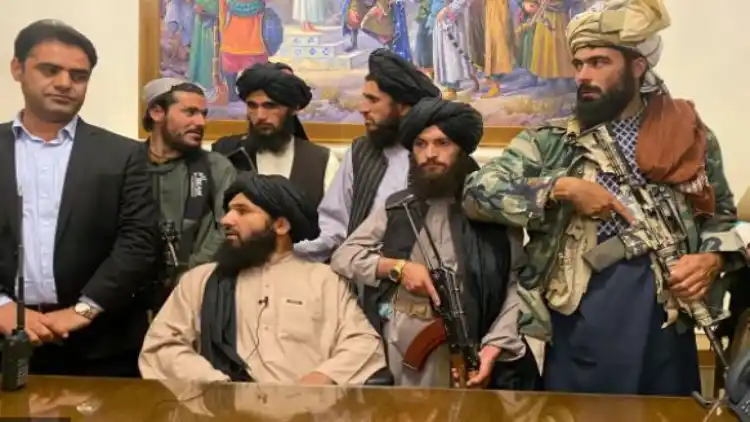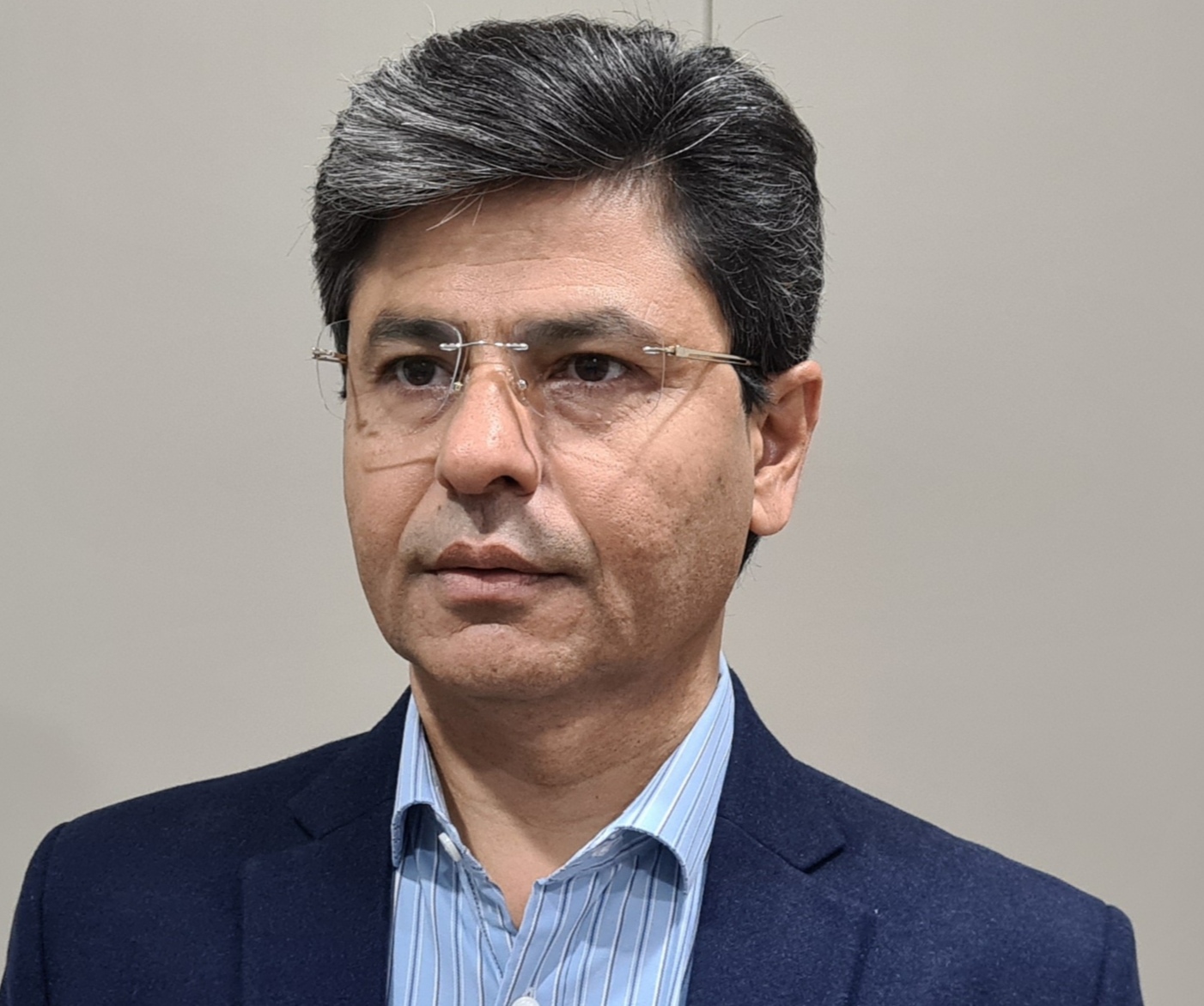
 Atir Khan
Atir Khan
If the past experiences are anything to go by, India has become highly vulnerable to spill-over effects from Afghanistan. Any let-up in the guard could lead to far-reaching consequences.
After the Taliban's takeover of Kabul, the regime is awaiting recognition from the international community yet there is a major concern that entities with vested interests and in charge of assets in Afghanistan could possibly divert cadres, who fought alongside the Taliban to other battle theatres including Jammu & Kashmir.
The people of J&K have previously suffered the fallout from the 'great game' in the Afghan theatre in the 1990s. With the Soviet withdrawal from Afghanistan, Pakistani agencies and their proxy tanzeems had diverted fighters to J&K. In the early 1990s, interrogations of several captured Afghans in J&K had revealed that they were cadres of Gulbuddin Hekmatyar's Hizb-e-Islami in Afghanistan, who had ended up fighting for Pakistan's proxy outfits such as Harkat-ul-Mujahideen and Al Barq in J&K.
In fact, Akbar Bhai, the bodyguard of Gulbadin Hekmatyar, was even killed in an encounter with the BSF in Sopore in August 1993. Even Al Badr, which was raised under Bhakt Zameen in the late 1990s, consisted of cadres that had earlier operated alongside Hel/G in Afghanistan later used to accommodate Pahari-speaking locals in the hilly areas of north Kashmir and Poonch-Rajouri.
With the Taliban gaining ascendency in Afghanistan in the mid-1990s, battle-hardened cadres from Afghanistan were pushed to J&K to operate under Pakistan's proxy outfits such as Laskar-e-Toiba and Harkat ul-Ansar, the predecessor of Jaish-e-Mohammad.
According to Gurbachan Jagat, who served as DG J&K Polic,e a steep rise in foreign fighters, especially hailing from Afghanistan and Pakistan, was noticed in J&K after 1994 primarily to give a "jihadi' or "Islamist colour to Pak-sponsored terrorism. To make these 'guest’ fighters more palatable to the locals, Pakistan's propaganda machinery in J&K portrayed them as deeply religious and locals who supported them were handsomely rewarded.
Much like Kashmir's Afghan experience' in the 18th Century, the battle-hardy Afghan and Pakistani cadres ruthlessly subjugated the locals- both the civilians as well as the local terrorists. These foreigners, who were elaborately projected as Islamic warriors, who had defeated the Soviets and led to its downfall, were soon found to be intrinsically opposed to Kashmiri ethos.
The case of Afghanistan-hardened militant Haroon Khan Mast Gul, who hailed from the tribal areas in the Af-Pak border region, is an apt example. His arrival in Charar-r-Sharif town of Budgam in December 1994 was well documented by another Pakistani militant Abdul Rehman in Lahore-based Urdu Digest in March 1998. Haroon had established domination over locals by 1995 and even had them rallying behind them initially, but the public mood changed after the burning of the Charar-e-Sharif shrine in May 1995. The disconnect of these foreign fighters and their masters based in Pakistan/occupied territories with local Kashmiris was exemplified when Haroon was welcomed and hailed for his exploits in J&K after crossing over to Muzaffarabad in PoK.
On August 4, 1995, he addressed a public rally in Rawalpindi and called for strengthening Kashmir jihad, flanked by Jamaat-e-Islami, Pakistan's chief Qazi Hussain Ahmad and Hizb-ul-Mujahideen supremo Yusuf Shah alias Syed Salahuddin. The public memory is short. The burning of Kashmir's revered shrine in Chrar and the migration of thousands of the town's residents, whose houses were gutted, lay forgotten.
Stories of the high-handedness of Afghan and Pakistani militants in J&K are also well known. The brute attitude while taking shelter in civilian homes in J&K during the 1990s and misbehavior with locals especially women had turned the local sentiment against these foreigners in the mid-late 1990s. Quite like what happened in Punjab, when Sikh terrorists exploited innocent people in Punjab & UP. Those people lived a hellish life as they could not go any complain anywhere, lest they would be slaughtered.
The latest developments in Afghanistan have increased apprehensions amongst the locals as well as the security forces in J&K. The concerns are not unfounded as LeT/JeM cadres in Afghanistan are well versed with the Taliban's cultural terrorism besides their political ambitions. The Taliban, during its rule in Afghanistan, had systematically erased markers of Afghanistan's rich multicultural past, including symbols of Buddhism, Zoroastrianism and Sufism. This was very similar to J&K's experience of Afghan-hardened foreign militants in the 1990s, wherein J&K's syncretic culture was dismissed and reverence of Sufi Shrines and mystics termed 'un-Islamic'.
Despite past experiences, a section of the Kashmiri society still continues hailing the victory of the Taliban in Afghanistan and portraying it as an Islamic victory. They must ask themselves the question of whether the Taliban’s interpretation of Islam is appropriate and would they like the upbringing of their children in the Talibani way of life.
Taliban's reiteration of its Deoband inclination, on account of earlier leaders emerging from madrasa networks in the border areas of Af-Pak, has been used to gain ideological legitimacy in Afghanistan and other parts of South Asia (including in J&K). Interestingly Arshad Madani, the chief patron of Darul-Uloom Deoband has distanced the institute from the Taliban by saying that it has nothing to do with the institute and drawing any connection in the present context would be inappropriate.
Taliban's code of conduct has little to do with Quran and Hadith, and its religious ideology is a perfunctory distorted justification at best. Quran says la ikraha fiddin- which means that Almighty Allah’s will is not to force anyone to accept his religion, though He has liked Islam for people. However, the tribal attitude only believes in full compliance and nothing else.
Taliban remains primarily a Pashtun-dominated group, and its policies and actions borrow heavily from tribal codes such as 'Pashtunwali" (legal and moral codes that determine social order and responsibilities) and 'tor' (relating to 'protection' of women) - codes that predate Islam in Afghanistan Codes that neither have any meaning nor any place in J&K.
Taliban in Afghanistan and militant outfits in J&K are both foreign constructs. While the Taliban was nurtured by the US and its allies to offset the Soviets in Afghanistan, militant tanzeems in J&K (even those purportedly Kashmiri-dominated) were sponsored by Pakistan for its own strategic gains against India.
Religious ideology was used as a justification for political ends in both cases. Subversion of multiculturalism and syncretic values was seen in both theatres. What happens after the political objectives of militant groups are fulfilled? The answer is complex as political objectives are mere myths. Terrorism exploits vulnerable youth, sometimes embroiling an entire generation, and provides them little choice or capability to leave the gun. There are enough instances in J&K, wherein ex-militants during their interaction with the local administration and police have reiterated the same. So, while cadres who fought alongside the Taliban may look for fresh goalposts in new theatres, the local experience of 'guest fighters’ and 'cultural terrorism' must not be forgotten in J&K.
